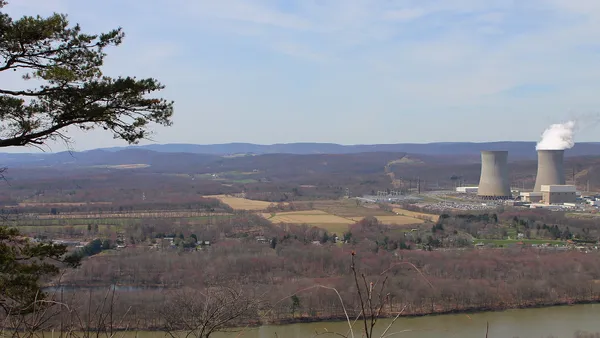Dive Brief:
- The U.S. Energy Information Administration has released new analysis of the Clean Power Plans' expected impacts, predicting power sector emissions to be 7% higher in 2022 and about 25% higher in 2030 and beyond if the greenhouse gas rules are blocked.
- Coal plant retirements will remain a trend with or without the CPP, but the federal carbon regulations would force more plants offline, culminating in about 100 GW of coal retirements from 2016 to 2040. Absent the new rules, EIA still anticipates about 60 GW of coal capacity to go offline during the same timeframe.
- While EIA expects the plan's impact on electricity prices to depend on compliance strategies, a preliminary release of its Annual Energy Outlook estimates retail electric prices may rise about 3% in the later planning years, EnergyWire reports, significantly less than the increases predicted by opponents of the plan, which reached as high as 14%.
Dive Insight:
New EIA analysis of the Clean Power Plan finds the United States at a crossroads — reductions in carbon emissions are here to stay, but would be more modest if the greenhouse gas rules are struck down in court.
New data released by the federal government yesterday shows that with the CPP in place, power-sector emissions are projected to be 28% lower than the 2005 level in 2022, when the initial mass-based standards are scheduled to begin.
"Final targets take effect in 2030 and remain constant thereafter, and the corresponding reduction in CO2 emissions compared with 2005 levels is about 35% from 2030–40," EIA reported. "Without the Clean Power Plan, power-sector CO2 emissions are 7% higher than in the reference case (which includes CPP implementation) in 2022 and about 25% higher in 2030 and beyond."
However, EIA noted these levels still remain "well below the 2005 level."
"Currently, the power sector accounts for 36% of total energy-related CO2 emissions, but its share falls to 31% by 2030 in the reference case when power sector emissions fall below those of the transportation sector," EIA said. "In the No CPP case, the power sector emissions remain near 36% of total energy-related CO2 emissions throughout the projection period."
While the U.S. Supreme Court stayed the Obama Administration's signature climate rule in February, delaying implementation until challenges are completed, the EIA's reference case includes CPP implementation.
Near-term coal plant retirements are all but an inevitability, EIA also noted.
"Significant coal retirements are expected regardless of CPP implementation," the agency predicted, in part because of the EPA's Mercury and Air Toxics Standards.
There were 14 GW of coal retirements in 2015, pushed along by cheaper gas and environmental regulations. But EIA predicted 2016 retirements could be three times that level — 40 GW to 45 GW. And after this year, another 55 GW of coal plants are expected to reture retire by 2040 with the Clean Power Plan.
Without the CPP, some 20 GW of coal capacity will still be retired from 2017 through 2040, the agency said.
EIA also noted that in the reference case, remaining coal-fired generation capacity is used less intensively over time as it is displaced by natural gas generators and renewable energy, resulting in coal consumption in the electric power sector declining by 34% from 2015 to 2040.
The plan's impacts on pricing will also be lower than believed by some critics, EnergyWire. The EIA's annual report expects prices to rise just 3%, ultimately, though there will be larger increases early on.
"The national average prices are higher as the rule's introduced, and it peaks about 2025, but by 2040 they're back pretty much to the same place," Paul Holtberg, EIA's program lead on the analysis, told the news outlet.















